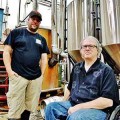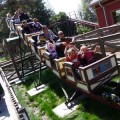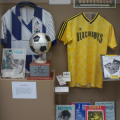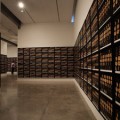In 1985, during the construction of the Fairmont Hotel on Market Street in San Jose, workers made a startling discovery: porcelain dinnerware, glass bottles and other artifacts from the city’s first Chinese settlement.
The find, considered one of the most important collections of Chinese artifacts ever recovered in the United States, led to the creation of San Jose’s Chinese American Historical Museum, which is celebrating its 20th year with a new traveling exhibit.
“Pioneering the Valley: The Chinese American Legacy in Santa Clara Valley” tells the Chinese immigrant story from the Gold Rush years to the achievements of today’s technology and civic leaders.
The exhibit, comprising 14 panels with photos and text, will be on display next door to the museum at the Pacific Hotel Gallery in History Park (at Kelley Park) through February 2012 before moving to the Dr. Martin Luther King, Jr. Library and other public venues.
“If we can get the history of the Chinese contribution out to the community, we can create a better understanding about diversity and the valley’s multicultural roots,” says Anita Wong Kwock, president of the Chinese Historical and Cultural Project, the show’s creator.
The exhibit begins with “The Five Chinatowns.” Like other immigrants, the Chinese came seeking opportunity and settled in their own communities. From the 1850s through 1931, there were five distinct Chinatowns in San Jose, each forming after the demise of the other due to fire or prohibitive laws.
During this period, anti-Chinese sentiment ran high. Local workers and those across America complained that the Chinese were taking jobs away from them. In 1882, U.S. lawmakers passed a law prohibiting the Chinese from becoming citizens. The exhibit’s second panel discusses how locals fought against these exclusion laws.
“There are so many cases in which Chinese went to court to fight against inequality,” explains Connie Young Yu, a historian who has written extensively about Santa Clara Country Chinese history. Yu’s grandfather came to San Jose from Canton in 1881, and her father was a local activist. “Their efforts helped protect and uphold the constitution for all Americans,” she says.
A number of the other panels point to the Chinese role in shaping the area’s economy and culture. Early settlers, mostly from Guangdong province in southern China, brought farming expertise and helped build roads and rail lines. Chinese helped fuel tech (engineer Art Fong joined Hewlett-Packard in 1946; Dr. Robert Mah NASA Ames Research in 1973), and further the arts (former Los Altos Hills resident and documentary filmmaker Jessica Yu won an Oscar).
One of the most interesting panels is a timeline, showing the parallel histories of San Jose, the United States and China.
Lillian Gong-Guy, who founded the Chinese Historical and Cultural Project with Gerrye Wong, says the exhibit’s most important feature is acknowledging the second wave of immigrants who came not just from mainland China but also from Hong Kong and Taiwan. This group notably includes Yahoo! co-founder Jerry Yang, who arrived in San Jose at age 10 from Taipei, and former Cupertino Mayor Michael Chang from Hong Kong.
“I hope people identify with the exhibit,” says Rodney Lum, the exhibit’s chairman. “Maybe they’ll say, ‘Oh, that’s my story,’ because it’s not just our story, but the American story.”
The museum itself is a replica of Ng Shing Gung, the temple that stood at the center of San Jose’s Chinese community life in the early 1900s. The museum houses a small collection of the recovered Market Street artifacts (Stanford’s anthropology department is cataloging, preserving and studying the rest), as well as the temple’s original altar and other items from early settlers.
Pioneering the Valley
Runs through February 2012
Pacific Hotel, History Park, San Jose
Tuesday-Sunday, 11am-5pm
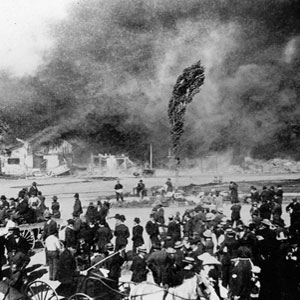
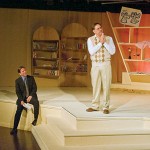 Tabard Theatre: ‘The Story of My Life’
Tabard Theatre: ‘The Story of My Life’ 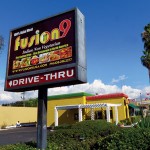 Review: Fusion 9
Review: Fusion 9 